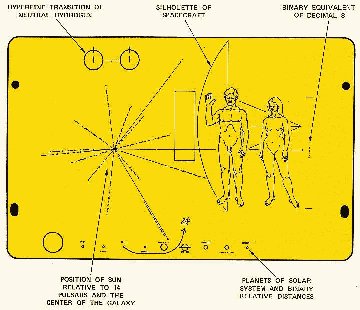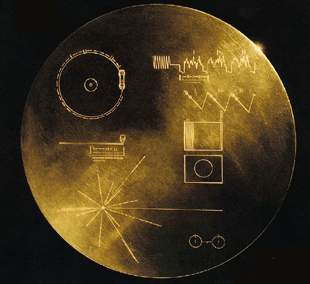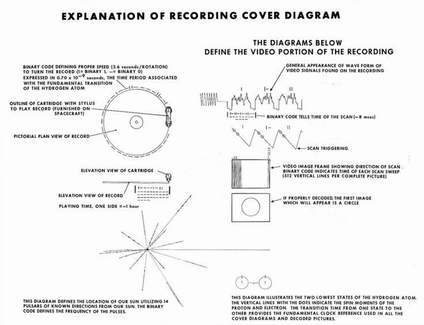
For many years now, man has been sending probes into space and on to the planets. The space age first began on October the 4th 1957 when Sputnik 1 became the first object to be launched into orbit. Many probes have gone to the Moon and man have even been landed there but we have gone many times further than our nearest neighbour.
Venus is our nearest neighbouring planet and has been a favourite for space probes. The American space probe Mariner 2 was the first probe to fly by Venus in 1963. The Americans followed this with Mariner 5 in 1967. After this the first Russian Venus probe Venera 4 reached Venus in 1967 and gave us the first data from the atmosphere. Venera 5 and 6, in 1969 tested the atmosphere and then impacted the surface. In 1979 however Venera 7 made the first landing. Venera 8, 9 and 10 have also landed and Venera 9 sent back the first views of the surface. Other probes have gone to Venus but the most well known is Magellan that carried out radar imagining of the surface between 1989 and 1990 before crashing into the planet.
Although Mercury is nearer than Mars, Mars has been a favourite as well as Venus. Mariner 4 from America arrived and flew by Mars in 1964. Mariner 6 and 7 followed in 1969 before Mars 2 from Russia arrived in 1971 and nine days later Mars 3 arrived and performed the first landing on the Red Planet. Mariner 9 then joined them two days later but made no landing.
The two most well known landings were made by the American probes Viking I and II in 1975. Other probes have been to Mars the most well known ones being the Vikings, the Global Surveyor, Pathfinder and Mars Expresses with Beagle 2. Pathfinder was a lander and had the Sojourner rover that explored the surface. The Polar Lander as the name suggest was also a lander as was Beagle 2.
Mars Reconnaissance Orbiter is planed by the Americans for 2005 and Mars 2009 for the year 2009. The French plan to send the Netlanders in late 2007.
Although Mercury is nearer to us than Mars the only probe ever to go to the Sun's nearest planet is Mariner 10 in November 1973. It sent us the first detailed images of the planet's surface and orbited 3 times until March 1974. However the Americans plan another Mercury orbiter, MESSENGER, for 2004. The European Space Agency plan to send BepiColombo in August 2009 and orbit and land. The Japanese are planning to send Mercury Orbiter also in August 2009.
The largest planet in the Solar System Jupiter has had five visits. Pioneer 10 launched in 1972 flew by Jupiter in 1973 and discovered hydrogen and helium in the atmosphere. In 1979 Pioneer 11 flew by and made observations of the polar regions and detected a magnetic field. Also in 1979 the Voyager I and II flew by. Voyager I discovered sulphur and mapped the moons while Voyager II mapped the moons. The most well known probe to visit the giant planet is Galileo, launched in 1989 and arrived in 1995. It had made many discoveries and in 2003 crashed into Jupiter.
Saturn has had only had 3 visits. Pioneer 11 made observations and took the first detailed Saturn views in 1979. Voyager I took photos and discovered 3 moons in 1980 while Voyager II took more photos in 1981. Although these are the only visits made so far in 1997 Cassini was launched. Cassini will reach Saturn in July 2004. It will drop Huygens' probe onto the surface of Titan before remaining in orbit to study Saturn until it breaks up.
Uranus and Neptune both have had only one visitor. In 1986 and 1989 respectively Voyager II reached the further gas giants. Voyager detected 10 new moons for Uranus. Neptune was more interesting though. Voyager detected rings for Neptune that had only been guessed before when they eclipsed stars and have never been confirmed however as rings go they very thin and hard to see. First views on the moon and clouds were also returned. Scientists were thrilled when Triton Neptune's largest moon was revealed to be the only planet in the Solar System to orbit in the opposite direction to its mother planet. The discovery of Geysers on its surface was also a discovery that tells us how lucky we are to live in such an interesting Universe.
Pluto is the lonely planet by not having had a single probe sent to it. This is possibly due at least partly to its distance and also partly to its eccentric orbit. However New Horizons planned for 2006 is a Pluto / Charon and Kuiper Belt fly by. It is due to arrive between 2015 and 2017 after a nine to eleven year trip so we have quite a wait to find out what this probe will reveal.
Four of the probes I have mentioned however are more special than just visiting the planet or planets that they have visited. Pioneer 10 after visiting Jupiter became the first man made object to leave the Solar System. Pioneer 11 and Voyager I left to Solar System after calling in on Saturn. Voyager II was however on the Grand Tour that lasted 12 years and took it to all the gas planets. The planets are only in place every 176 years, which make it a once in a lifetime opportunity. After Neptune though, Voyager II also left to Solar System and its next stop is Sirius 300,000 years away. These are the only four probes to have left the Solar System and ventured into deep space.
What will happen to these probes in not sure. Their batteries will eventually run down but provided they are not hit by asteroids or crash into other objects they could survive indefinitely. Voyager will eventually reach Sirius as long if it passes no obstacles on its journey. Scientists have thought that the Pioneers or the Voyagers may be picked up by aliens. In case of this they have left messages for the aliens to read.
The Pioneers carry gold plates with a well recognised picture. It shows two hydrogen atoms and the position of the Solar System from several pulsars with the distance in binary. It also has a diagram of the Solar System with the planet that they came from and a picture of a naked man and woman with the Pioneer behind for size comparison.

Voyagers I and II carry compact discs with pictures and sounds for Earth digitally encoded onto them so Voyager II may one day end up in an alien museum. Maybe we will pick up probes from the aliens. We can only hope they leave for us, as good information about themselves as we have left for them about us.


Return to Mars and outer planets trading post.
Go to top.